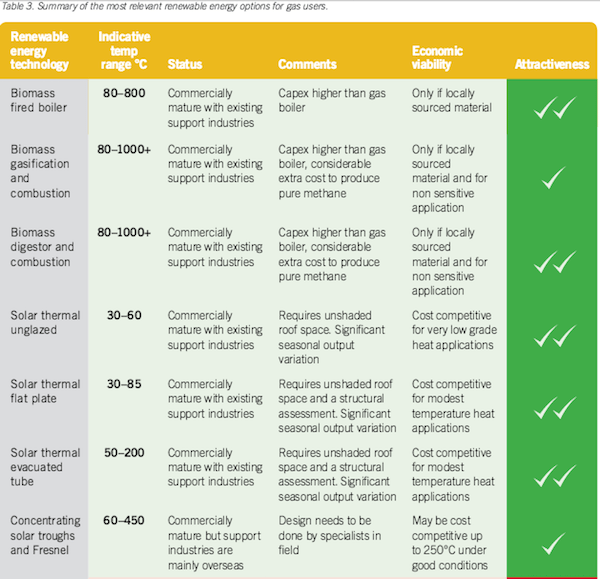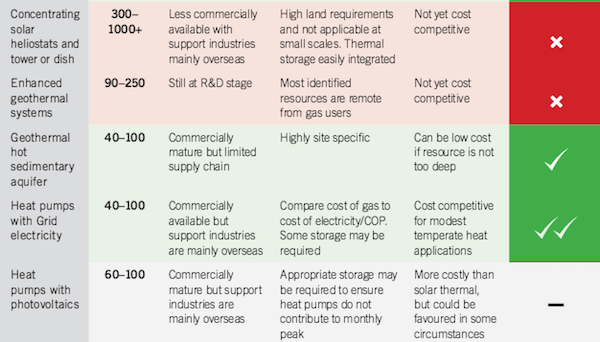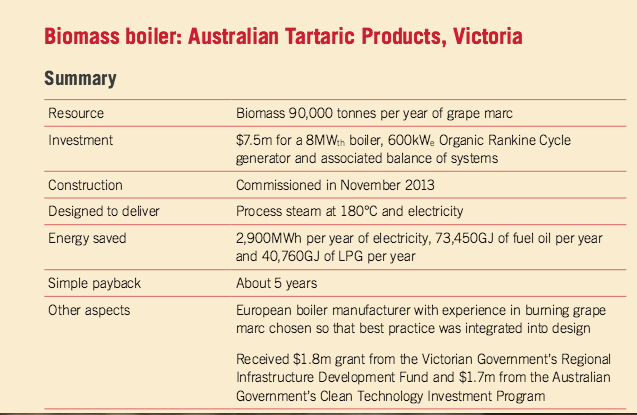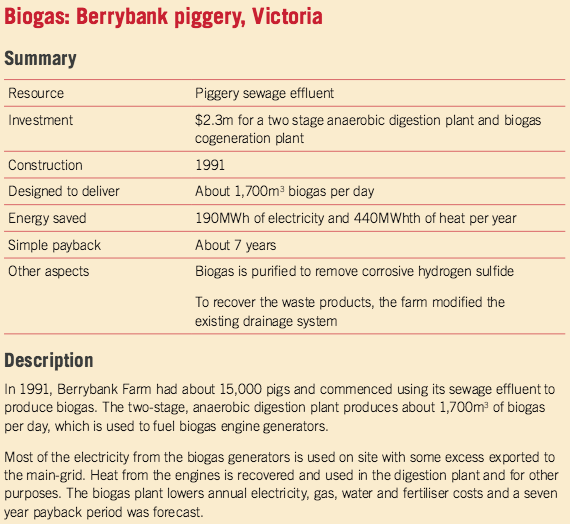A new ARENA-backed report has outlined the increasing number of renewable energy alternatives available to Australia’s small to medium industrial sector, to help cut its ties with an increasingly costly and uncertain domestic gas market.
The report – a summary of analysis by IT Power in conjunction with Pitt&Sherry and the Institute for Sustainable Futures – outlines a range of opportunities for reducing industrial gas usage with renewable energy solutions that are economic, or close to economic, across all mass markets, as well as some large user industry sectors.
And these opportunities will grow, the report says, as gas prices continue to rise.
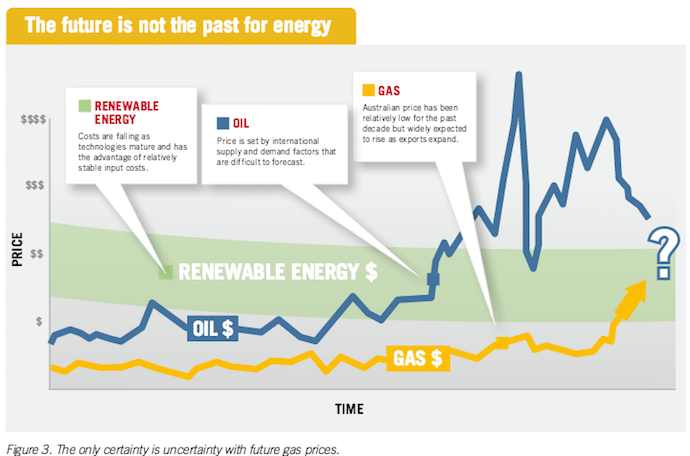
“Uncertainty around continuing availability and likely cost of natural gas for local industrial use is of increasing concern in Australia,” the report says, with domestic prices predicted to increase to levels determined by international prices.
Already, in 2014, it notes, wholesale prices ranged from $6/GJ to $8/GJ and it is forecast that they will continue to rise, with prices projected to reach between $9 and $12/GJ before the end of the decade. Large gas users are also reporting difficulty in securing long term supply contracts, the report says.
So what kind of industrial businesses can benefit from a switch to renewables, and what technologies should they use?
As the report notes, Australia’s industrial users account for nearly half of domestic demand for gas, which they use for process heat.
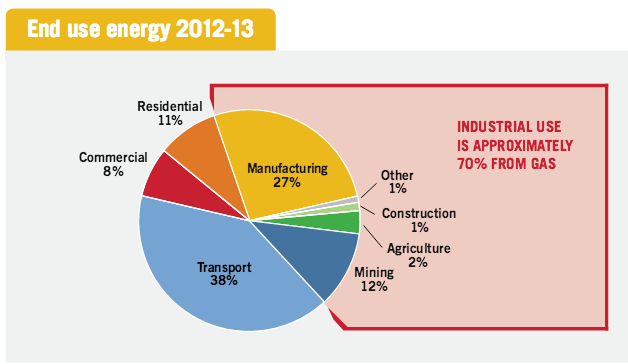
As you can see in the chart below, of the smaller ‘mass market’ industrial users, food and beverage related sectors are the largest in usage and have the greatest demand for heat below 150°C.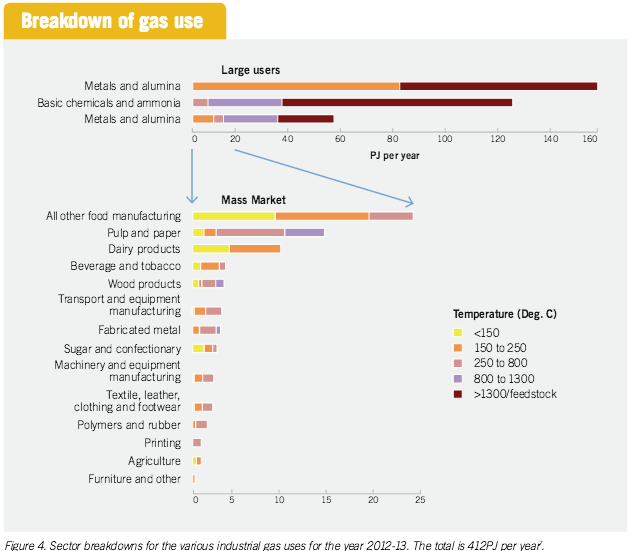
For businesses like these, the report outlines a range of renewable energy solutions that are established, technically feasible and suitable for substitution for most gas applications.
These include bioenergy and solar thermal, hot sedimentary aquifer geothermal and heat pumps. An ‘off the shelf’ renewable alternative can heat water/steam for process heat while operational risk is minimised by maintaining a gas-fired capability as back-up, the report says.
Of course, it qualifies that rigorous economic evaluation is very site and process specific. But to this end, an approach that can provide indicative assessment of the value proposition as a precursor to a site specific detailed investigation has been developed.
Another point of note is that technologies have a strong size dependence on capital cost that makes larger systems more cost-effective. But the report notes that balancing this is the fact that small users tend to pay more for gas.
“Technically, a renewable energy solution can be engineered for every single current use of gas by industry,” the report says. “However, there is a subset of solutions that are lower in technical risk and cost, and are both proven and commercially available.
“Those that are still in the pilot or even R&D phase (for example solutions for very high temperatures or for chemical feedstocks) bring higher risk and cost,” it says.
To the case studies; the report notes that there are many examples of renewable energy systems in Australia and around the world, providing energy services that could otherwise be provided by gas.
Here are a few of these, as presented in the report.


